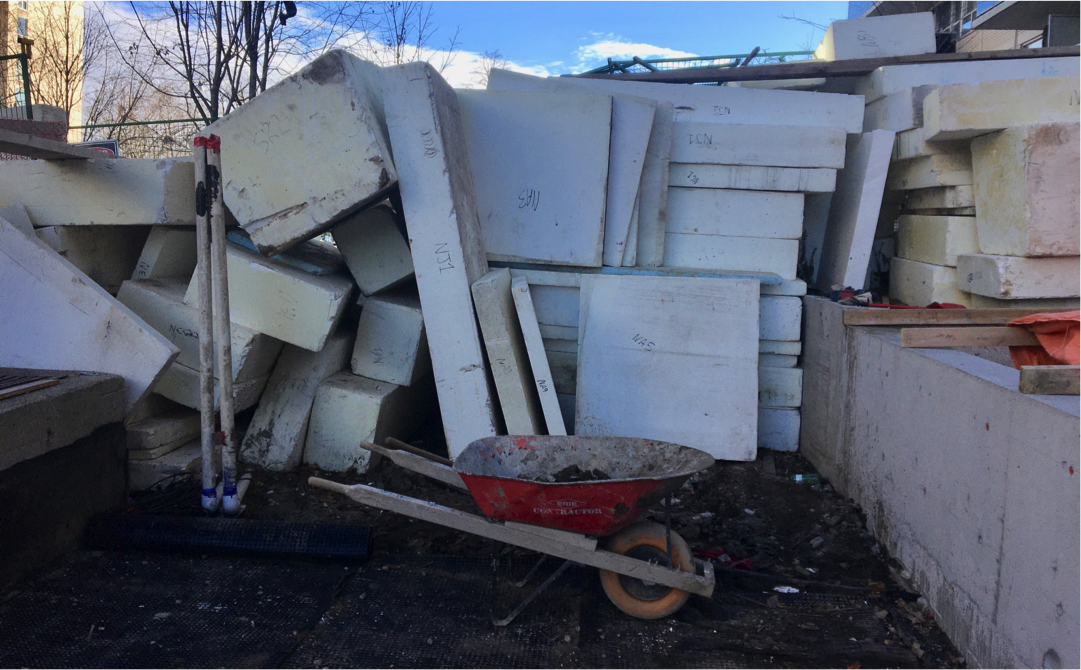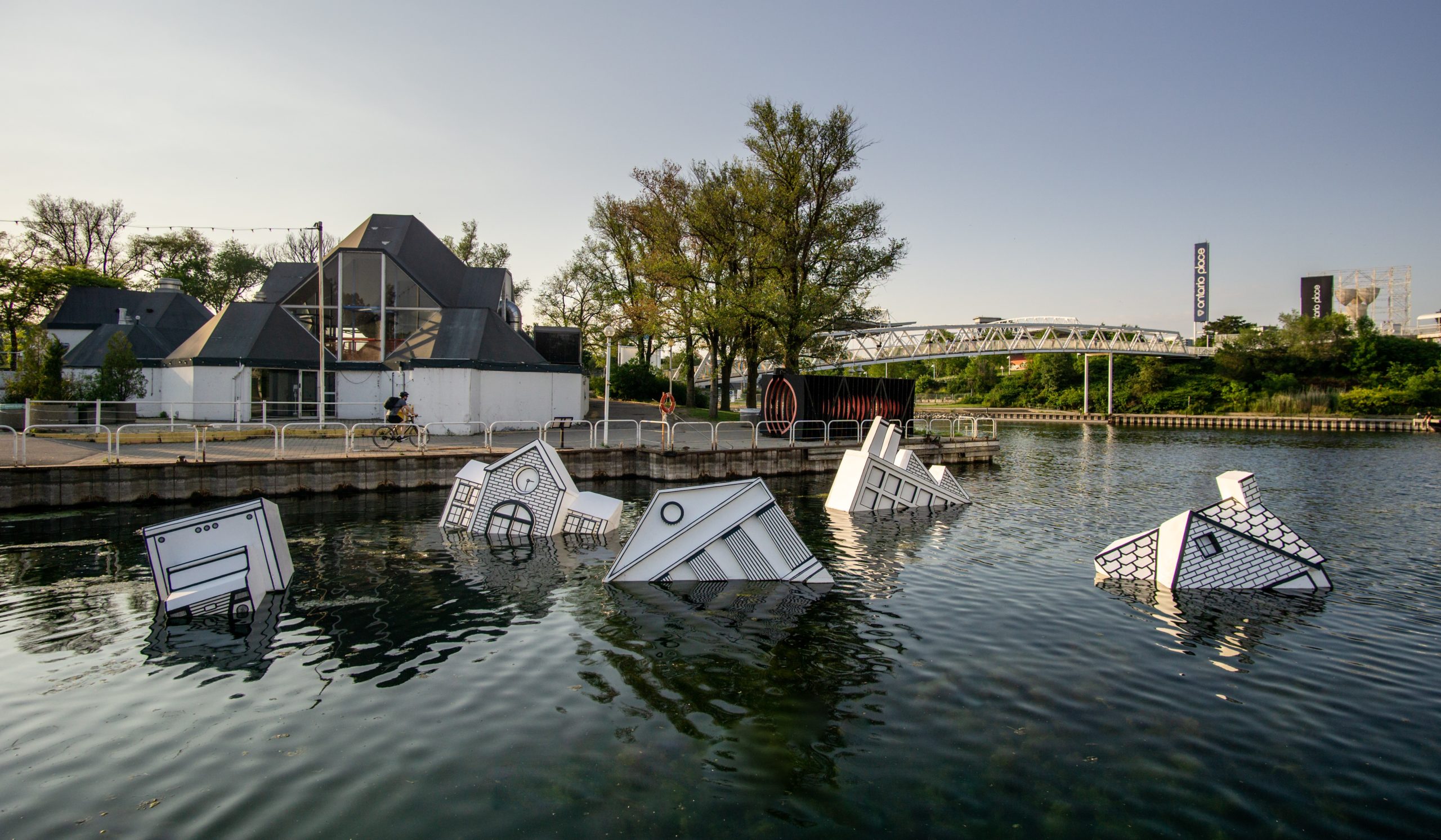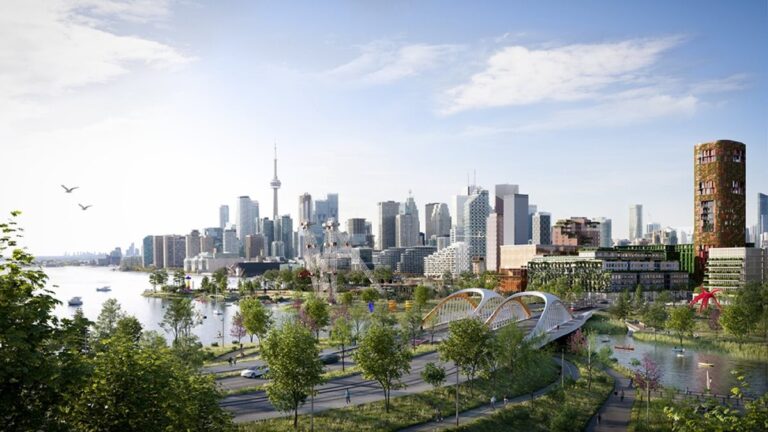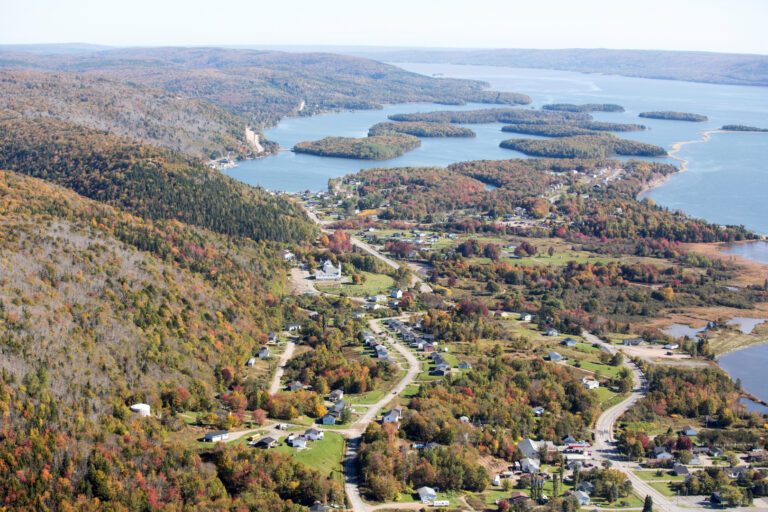Sunday, July 6, 2025
Ontario Place in Toronto is now presenting “Over Floe,” a climate change themed sculpture installation that will float in the inner lagoon from spring until fall, 2021. The installation is an initiative of ArtWorxTO: Toronto’s Year of Public Art 2021-22.
John Notten, the Toronto-based artist and educator who produced the art, reached out to construction firm EllisDon last year to see if it could provide some waste construction material for one of his projects. The company, which is actively working to reduce its impact on the environment and reduce carbon emissions, provided materials from a recent demolition from the Grenadier Square project site in Toronto.

Six months later, Notten has transformed the waste materials into Over Floe, a public art project that compels viewers to discover the meaning behind the icebergs and the consequences of environmental pollution and global warming.
Icebergs in Toronto?
While not out of place in many more northern parts of the planet, the idea of five icebergs floating into Toronto at Ontario Place is unusual. As visitors will discover, these are more than just traditional icebergs.
The puzzle of these strange geometric forms is revealed only when experienced from different perspectives. Approaching from one direction, they are simply icebergs. However, each of the five structures reveals a contrary façade: a suburban house, a school, a bank, a factory, and a truck.

Where did they come from? Are they the result of a natural disaster? A flood perhaps, like that caused by Hurricane Hazel back in October of 1954? Or are they a metaphor for the future of a planet ever challenged by a changing climate?
John Notten, Toronto artist behind Over Floe.
Rising sea levels
Global sea levels have been rising since the turn of the 20th century. As a result of human-caused global warming, ice sheets are melting and oceans are expanding. Cities around the world, including Toronto, have drawn from them a multitude of benefits from the bodies of water that surround them. With carbon dioxide and other greenhouse gas emissions raising temperatures around the globe, polar ice is melting at an alarming rate causing dramatic changes in weather and increased risks of flooding.
Poignant art materials
The installation is made almost entirely of expanded polystyrene (EPS), commonly known as Styrofoam. Like icebergs, EPS is 95 per cent air, a quality that makes both very buoyant. And both, of course, are typically white in colour. However, the similarities between the two end there.
Styrofoam is an ironic material choice: perhaps the least likely candidate with which to create a chunk of floating ice. Though it may be endlessly useful in packaging and building practices, EPS contributes an enormous amount of waste to our landfills every year, filling up to 30 per cent of landfill space around the world. Because EPS is not biodegradable, it remains buried without decomposition for a very long time. And because it is extremely lightweight, EPS often breaks down and finds its way into the ocean where it represents a major source of harmful pollution.

Using a material so often associated with harm to the environment to offer an environmental warning had to be done with considerable thought and consultation. Care was put into ensuring that the art is safe for the local environment and wildlife in and around Lake Ontario. Like a canoe, it has a durable epoxy coating eliminating any risk to the area in which it floats. Once the project is complete the EPS will be recycled and repurposed at a specialized facility.
Over Floe offers an opportunity for the viewer to consider connections between this provocative material, the image of floating icebergs, and those of half-submerged iconic institutions.
To learn more about this installation, click here.
Featured images from Ontario Place, Government of Ontario.











